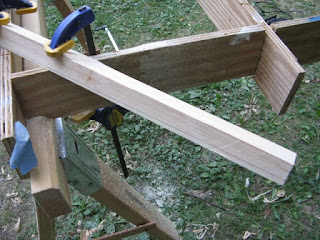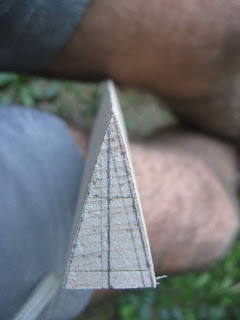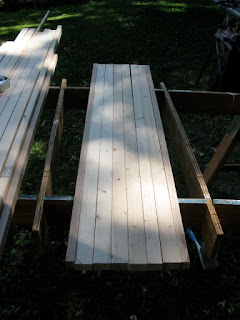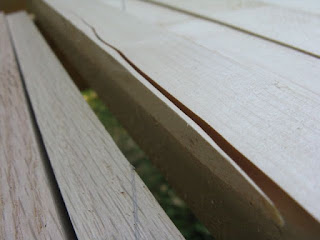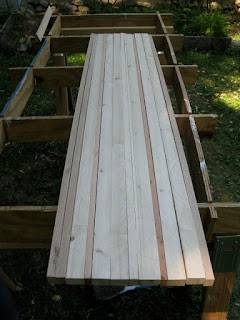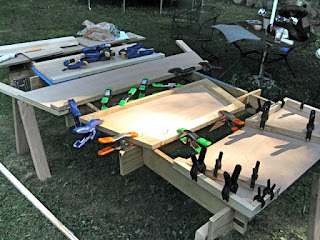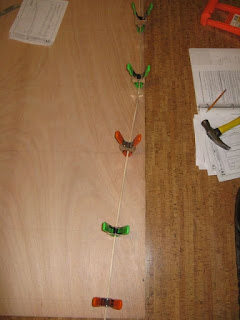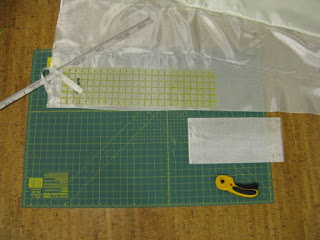[Edit: as it turns out, I was able to transport the special wood--Black Walnut from my in-laws' farm--in late August. Althought the transom piece is set, I will be using the walnut for breast hook and knees afterall. I should have a more details in an August posting.]
It took a little time to work out the shape I wanted now that I've deviated from Storer's simple plan. Normally this piece would would be a straight horizontal board along its bottom edge, but my enlarged tiller cutout called for a deviation. The large bar clamp is keeping the frame from wandering away from the side frames. Now that this piece is in place I can coat the rest of the transom as I have done with the other flat assemblies.
Also, it's important to note something the plans don't mention. NOW is the time to add reinforcement to the transom for the rudder hardware to attach to. In fact, I plan to install that hardware while the transom is still apart, another deviation from the plan. Once the hull is built, the lower rudder attachment will end up inside the buoyancy tank which might be very difficult or impossible to reach depending on how one installs inspection ports. By doing it now I can manhandle the transom with ease. Great thanks to Paulie of Connecticut for the tip (sadly, one he was unaware of for his own build).














